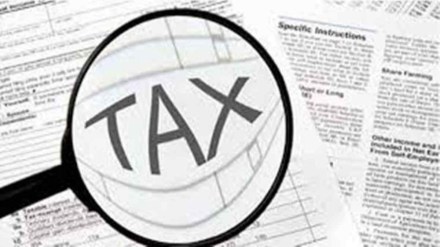Completing tax reforms via the long-shelved Direct Taxes Code is reportedly going to be on top of the agenda of the Modi government if voted back to power. The Congress party’s poll manifesto also talks about revisiting the code, first mooted by the UPA-1 government way back in 2009. The broad direction of the reforms is clear — making tax rates benign, expanding the base, simplifying the tax structure, laws and governance, and easing compliance. A stable, transparent, non-intrusive tax regime that leaves the least scope for dispute and litigation is the goal. In fact, a lot of significant changes along these lines have already been carried out over the last few years.
What’s left mainly is a rewriting of the Income Tax Act, 1961, from scratch to remove the ambiguities. In the process, the capital gains tax and TDS regimes may also be streamlined, and the domestic tax provisions aligned more with those in mature economies. However, a few pertinent questions about the direction of the reforms itself need to be raised at this juncture, without quarrelling with the compelling objective of raising the country’s tax-GDP ratio by several notches. The first decade of the millennium saw a steady and unprecedented jump in the tax-GDP ratio (for central taxes, it rose to a peak of 12.1% in FY08, sharply up from 8.7% in FY01), and resultant higher revenue buoyancy. However, contrary to what many believe, a further rise in the ratio could not be achieved in all the erratic years since, with an average of just 10.7% between FY10 and FY25 (BE).
A shift in tax incidence from companies to individuals, and a fall in the share of direct taxes in total tax revenues for the government are two other worrying trends. These are surely not among the stated objectives of the reforms. Direct taxes had a share of 59% in the Centre’s gross tax receipts in FY10, and for FY25, this is budgeted to be 53%. Revenues collected from the tax on corporate income were 2.15 times those from personal income tax (PIT) in FY11, but PIT receipts were higher than corporate tax revenue by `1.33 trillion in FY24 (in other words, PIT was 1.15 times the corporate tax). Curiously, the government doesn’t seem to have a problem with this — the interim Budget for FY25 envisages PIT collections to be 19% of total inflows to the exchequer, higher than GST (18%) and corporate tax (17%).
It is doubtful if the tax reforms have paid off, despite the strong support of digital infrastructure that encouraged compliance and sleuthing, and the growing financialisation of wealth that should have normally boosted government revenues. An “inheritance tax” may be a blunt tool to correct the socioeconomic inequalities for a low middle-income economy like India. But a progressive tax system, where tax rates increase with incremental income, and are linked to taxpayers’ ability to pay, must remain the focus of India’s policy. When household savings are at the lowest level in half a century, and their debt seemingly at a historic high, taxes shouldn’t pinch. Removal of explicit tax incentives for household savings is the right policy, as it allows taxpayers more freedom on what to do with their money, but a lower incidence of tax must be ensured. It’s more desirable and practical to have domestic demand financed more and more via domestic savings, rather than a bloated current account deficit.
